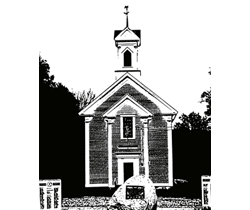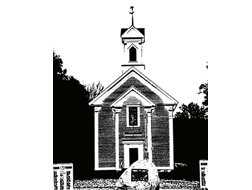
copyright the Chronicle September 10, 2014
by Tena Starr
WESTFIELD — Since property tax bills here went out recently, town officials have heard a lot of griping — and confusion. Why did the residential property tax rate go up 24 percent when the Jay-Westfield School budget went up by about 5 percent?
“We’ve had a lot of people not happy, and I’m in that category,” said Westfield Town Clerk LaDonna Dunn. “This year in Westfield we got hit pretty hard.”
“We’ve got some people who had increases of up to $1,400, with no improvements to their property, nothing changed,” said Yves Daigle, chairman of the Westfield Selectmen. “We have a town not happy with the school tax rate, not happy at all, and they’re letting us know about it.”
Westfield School Director Kevin Amyot said he was one of those people who was shocked when he opened up his tax bill.
“I know there was no frivolous spending,” he said, referring to the Jay-Westfield school budget. “I feel we’re a very responsible board. I feel we really try to hold expenses back as much as we can.”
Mr. Amyot and his family have lived in Westfield for about 11 years. He said that, in that time, he’s seen his property taxes more than double. He’s been on the school board for four years.
“It was a real eye opener for me, what we can and what we can’t control,” he said. “I went in there thinking we can cut this, we can cut that, but in reality we can’t. You can cut music, you can cut art, but who are you really hurting?”
Mr. Amyot said he expects he’ll have to go to Town Meeting this year wearing a suit of armor.
Westfield residents aren’t alone. In Jay, the little town that shares the school, property taxes increased this year by 18 percent.
Town Clerk Tara Morse said she saw her own property tax bill go up by $800.
Ms. Morse said the town of Jay sends more money to the state — roughly $3-million — for education funding than she keeps to run the school and the town put together.
She said, above all, she hopes that legislators will take a look at the way people are currently taxed in order to fund education and come up with something that is understandable and fair.
“I would like to see them revisit this and find a different way to tax education,” Ms. Morse said.
Other Orleans County towns have seen double digit increases as well.
“Jay got hammered,” said state Senator John Rodgers, although he added that Westfield’s 24 percent increase was the highest he’d heard of yet. Derby, Morgan and several other towns have also seen steep increases in property taxes this year, Mr. Rodgers said.
And he’s hearing about it.
Town clerks, apparently weary of fielding complaints they can do nothing about, and aren’t responsible for, are referring angry taxpayers to their legislators.
“I’ve got tons of calls from people,” Mr. Rodgers said. “There are several towns around whose taxes went up double digits. For the average person, this is already an unaffordable place to live because wages are low and the cost of living is high. Then you get hit with double digit increases in things you have to pay.
“We’re struggling to keep our youth here, and I think if the state continues to get more unaffordable we’re going to lose a whole bunch of people.”
So why have property taxes gone up so sharply when local school budgets have not?
“I really don’t have the answer,” Mr. Amyot said. “I don’t know where our money is going.”
“I can’t explain how the funding works,” said fellow Westfield School Director Loren Petzoldt. “You vote on a budget, not on taxes, but taxes are getting way out of line. What we spend has no basis in taxes.”
“The system is so convoluted that only a handful of people understand it,” Mr. Rodgers said.
He doesn’t claim to be one of them.
“There’s so many moving pieces,” he said. “I truly believe there’s only a handful of people who understand it.”
State Senator Bobby Starr of North Troy, who spent six years on the education committee, two as chairman, said that even he does not totally grasp the education funding formula.
“I don’t fully understand it either, and I’ve been fooling around with [funding formulas] for 35 years,” Mr. Starr said.
But he took a stab at an explanation of the Jay-Westfield situation.
Yes, there are many moving parts. But three basic factors go into the tax rate, Mr. Starr said.
They are: the total school budget, the money received largely for special education — called offsetting revenues — and the equalized student count for the district.
When calculating spending per student, Vermont uses “equalized pupils” rather than the actual head count in each school.
“While based on a straight student count, the formula for equalized pupils gives less weight to pre-kindergarten pupils and extra weight to students in secondary school, those from economically deprived backgrounds, and those whose first language is not English,” says a website explanation from the Public Assets Institute. “The principle behind the weighting is that it costs more to educate students in certain categories.”
A property owner’s homestead tax rate increases when spending per pupil increases.
In Westfield, the 2014 spending per pupil is $11,708, according to figures from the Education Agency. For 2015, it will be $13,969, a 19.3 percent change.
Per pupil spending is determined by the three factors Mr. Starr listed: total budget, offsetting revenues, and equalized pupil count.
In Westfield’s case, the 2015 budget is slightly higher, offsetting revenue is down, and the equalized pupil count for 2015 will also be down, from 43.64 students to 40.27.
All three factors put upward pressure on the tax rate.
“All these things add up,” Mr. Starr said.
In Jay, overall spending per pupil went from $13,704 to $15,645. Education spending for 2014 is $731,521 compared to $828,569 for 2015.
“That’s a $97,000 switcheroo in the wrong direction,” Mr. Starr said.
That’s an incomplete explanation for a situation that taxpayers throughout Vermont are increasingly finding untenable.
This year, about three dozen school budgets went down to defeat, but the vast majority were approved without much of a battle.
“People vote for school budgets because they want to support their board and their kids,” Mr. Rodgers said.
But he thinks a lot more are going to have to be rejected before things change much.
“I think a ton of school budgets are going to have to be voted down before Montpelier gets it,” Mr. Rodgers said.
The education formula, which has been tinkered with and tweaked, is like an “old beat up car” that’s been fixed once too often, Mr. Rodgers said.
What many people find frustrating is that there is not necessarily a direct correlation between what a town votes to spend on its local school and what its school tax will be any longer. In some cases, school budgets have actually decreased and education taxes have still increased.
“Somehow in the convoluted formula, schools in our area, which have largely done an excellent job, are getting punished for other schools not keeping costs down,” Mr. Rodgers said.
And what nearly everyone finds baffling is the formula itself. Very few taxpayers, or even school board members, have a good grasp of how it works, and, thus, how they can keep the lid on their own property tax bills.
This is the first in a series of articles about education funding.
contact Tena Starr at [email protected]
For more free articles from the Chronicle like this one, see our Editor’s Picks pages. For all the Chronicle’s stories, pick up a print copy or subscribe, either for print or digital editions.








